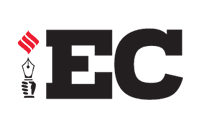By Girija Kolagada, VP of Engineering, Progress
DevSecOps has become a vital strategy in application development practice, as it integrates security into agile DevOps workflows. This proactive approach towards security helps to tackle threats during development instead of post-deployment retrogressive reactions.
In 2025, AI and automation look poised to transform DevSecOps, substantially rewiring and further enhancing security. Automation will not only handle repetitive tasks, but also help to proactively detect threats, and provide real-time insights, allowing IT teams to quickly identify and address vulnerabilities throughout the entire software development lifecycle. This shift will facilitate faster delivery of secure software with minimal human intervention.
Let us look at some of how these developments will play out.
The promise of AI and Automation
Continuous Compliance Automation:
Firstly, DevSecOps will incorporate compliance as code, automating policy checks within CI/CD pipelines. The possibility of real-time alerts for violations will enable immediate corrections, reducing dependence on manual interventions and ensuring organisations stay compliant while maintaining steady development speed.
Extreme Shift-Left:
Secondly, the growing adoption of automation will ensure security is embedded into application development practice from end-to-end—from design to delivery. This “shift-left” approach will be fundamental in 2025, as security will be rooted in software design from the outset. As a result, organisations will focus far more on architectural resilience and secure coding practices, by utilising advanced AI tools to detect vulnerabilities quickly and accurately, improve software quality, and reduce risks before development even begins. Secure design principles founded on minimising attack surfaces, zero-trust architectures, and robust encryption, will all consequently become standard practice.
Automation and Hyper-Automation in DevSecOps:
Thirdly, hyper-automation will revolutionise DevSecOps by automating not only vulnerability assessments but also complex workflows like patch management, dependency tracking, and policy enforcement. AI systems will be capable of autonomously identifying and prioritising vulnerabilities based on potential impact, thereby minimising security bottlenecks and ensuring consistent protection across rapid deployments.
Predictive AI and Machine Learning for Threat Intelligence:
Fourthly, predictive AI will help to firmly shift security from being mainly reactive to proactive. In 2025, AI-driven platforms will increasingly analyse data in real-time, detecting anomalies swiftly, assessing behavioral patterns by analysing vast volumes of data, and predicting attacks before they happen. Adaptive AI will also enhance dynamic access control, adjusting permissions based on user behavior and context to mitigate insider threats.
What will help all these developments will be a parallel shift in the way organisations approach security as a whole.
Embedding security into codes
By 2025, “Security as Code” will extend beyond infrastructure to also include Policy as Code, thereby embedding comprehensive security policies into code repositories. This will ensure consistent enforcement of data protection, network configurations, and identity management across all environments. Additionally, reusable templates will reduce misconfigurations and maintain compliance, creating a robust and scalable security framework.
Further, in 2025, observability tools will provide detailed insights across applications, using AI to detect anomalies and unusual activity. Automated incident response systems will be empowered to isolate threats, initiate forensic analysis, and trigger alerts instantly, dramatically minimising the impact of breaches.
By embedding security into every phase of the application development lifecycle, DevSecOps will become essential to delivering high-quality, secure software reliably and quickly. Organisations will be better able to meet compliance requirements and build systems that are far more resilient to evolving threats in a fast-changing world.
In summary, the evolution of DevSecOps represents both a cultural and technical shift. With AI-driven tools, hyper-automation, and Policy as Code, organisations will transform security from being a siloed concern into an integrated, proactive enabler of growth and innovation. There is no doubt that DevSecOps will empower organisations to innovate confidently, by ensuring that every line of code is designed for resilience with safety embedded in its DNA.

